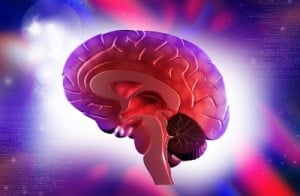 Learning a foreign language is arguably one of the best ways to exercise the brain, as the process of learning a new language requires an immense amount of brain activation in various areas of the brain. When the brain hears a word, the brain immediately begins to analyze the sounds to make sense of what is being said. This process of understanding and formulating responses engages different parts of the brain at once. Various executive functions are utilized and developed in the process, including attention, memory, reasoning, organization, and planning. In fact, these parts of the brain are notably larger in bilingual people than in monolinguals, making them able to manage complex situations and switch back and forth between tasks with more ease.
Learning a foreign language is arguably one of the best ways to exercise the brain, as the process of learning a new language requires an immense amount of brain activation in various areas of the brain. When the brain hears a word, the brain immediately begins to analyze the sounds to make sense of what is being said. This process of understanding and formulating responses engages different parts of the brain at once. Various executive functions are utilized and developed in the process, including attention, memory, reasoning, organization, and planning. In fact, these parts of the brain are notably larger in bilingual people than in monolinguals, making them able to manage complex situations and switch back and forth between tasks with more ease.
Four different regions of the brain are activated for language skills. Firstly, the auditory cortex obtains the words being said through sound, helping the person put the sounds into context and organize the sounds to be sent to more analytical areas of the brain in terms of meaning. Then, the information passes through Wernicke’s area, a part of the brain known for turning the sounds into meaning. After fully understanding what is being said, located in the left hemisphere of the brain with Wernicke’s area, Broca’s area assists with the organization of the production of language response. Finally, the motor cortex helps the brain execute the movements necessary to articulate a response.
The benefits of being bilingual are invaluable. Those who speak more than one language maintain the clarity of memories better, are more cognitively creative, and have more brain flexibility, because learning and speaking another language requires intense task management within the brain. Learning another language helps a person become more accustomed to processing auditory information. Researchers have noted that people who speak more than one language test better in attention and concentration, and have the ability to ignore irrelevant stimuli, focusing only on important information, due to the organization skills attained from exercising the brain through language. These skills can be incredibly helpful in lecture scenarios, as a person is able to distinguish and extract the most important information without difficulty.
The practice of speaking multiple languages wards off the onset of age-related degenerative illnesses, such as dementia and Alzheimer’s due to the constant activation within the brain. In short, learning and speaking another language is exceptional exercise for the brain, which helps to maintain cognitive health, even into the later stages of a person’s life.
Various studies using MRI scans have shown obvious brain growth in people after learning a second language, growing in the hippocampus, parts of the cerebral cortex associated with language skills, and even the motor regions of the brain. However, those who grow more in the motor regions of the brain often have more trouble with language skills than those who had growth in other areas more directly associated with language. Additionally, brain development varies greatly depending on performance ability, meaning the better a person is able to speak another language, the more the brain will grow.
The age at which a child learns a second language does influence the structural development of a child’s brain. Studies have indicated that if a child learns two languages from birth, the brain develops similarly to a child who is learning just one language from birth. On the other hand, if a child learns a new language after gaining fluency in another language first, learning an additional language modifies the brain’s overall structure, inspiring and strengthening new neural growth and connections throughout the brain. The brain’s inferior frontal cortex has been noted in particular. The frontal cortex is a mass of neurons with many layers that is majorly responsible for cognitive and executive functions. Notably, when a child learns an additional language after becoming fluent in one, the left inferior frontal cortex actually becomes thicker while the right inferior frontal cortex becomes thinner.
Although many argue that learning another language at a young age is better, studies have indicated that learning another language during adulthood will give a person most of the benefits acquired when learning a language at a young age. As mentioned, learning a language is valuable exercise for the brain to improve focus and processing, which is beneficial at any age. On average, bilingual people are diagnosed with brain degenerative illnesses about four years later than monolinguals.
In addition to all of the benefits language has on the brain, language also shapes the way a person thinks. Different languages inspire people to think in different perspectives due to different means of phrasing and conveying ideas. In addition to influencing the power of a person’s speech and communication, languages also influence the power of a person’s writing skills and persuasive abilities. It is never too late to start learning a new language!
Neurofeedback is an excellent method of prepping the brain to make learning a new language much easier. Neurofeedback is also exercise for the brain, and it improves executive function skills naturally just as learning a new language does. The more exercise the brain gets, the better and easier it functions. Additionally, if a person is struggling with learning new languages, neurofeedback can provide a person with the extra help needed for the brain to organize as needed for language skills and retention. For more information, schedule a free consultation with our director Dr. Jolene Ross.
Image courtesy of Vlado at FreeDigitalPhotos.net








